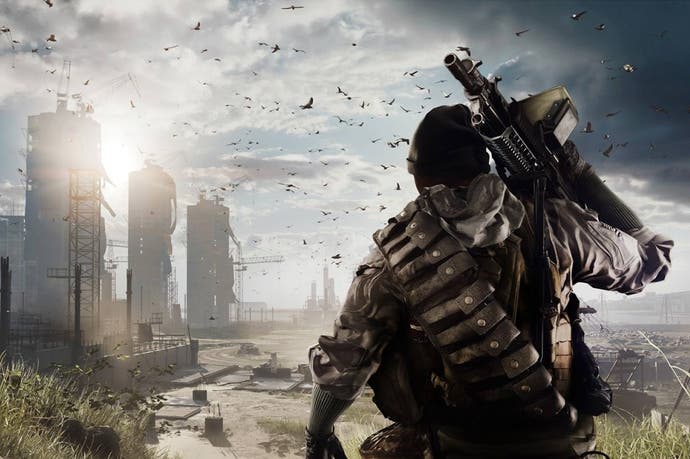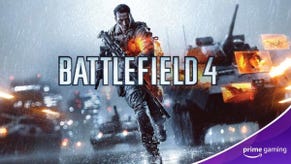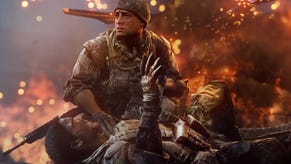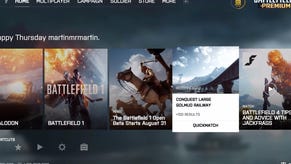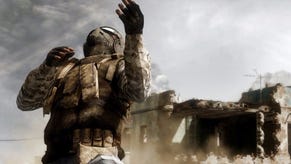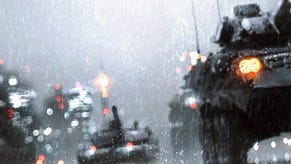Battlefield 4 review
Generations at war.
"You don't want people to feel alienated by crazy features and crazy changes." So said Battlefield's executive producer, Patrick Bach, just over a week ago. Few will have been surprised by his words, what with the military shooter genre not being known for its radical reinventions, but it's interesting that he felt he had to address the issue at all.
Battlefield 4 is, of course, pretty much exactly the game you expect. A rather thin single-player campaign hangs on the tail of a much more interesting and robust multiplayer offering in which players skirmish across vast maps, throwing everything from quad bikes to state-of-the-art jet fighters at each other in an attempt to gain that precious additional XP, that must-have weapon unlock, that next slot up on the leaderboard. It's Battlefield, and the fundamentals are no more likely to change than Manchester United is likely to field an ostrich in goal, just to be different.
As with many franchises that have endured throughout this hardware generation and beyond, what we're looking at is less a case of ongoing evolution and more a question of custodianship. The numbers on the end of each game's title suggest an escalating sequence, but that's an old model that is rapidly becoming obsolete. Like most online games, it helps to view Battlefield 4 as an update to an ongoing service rather than a distinct product in and of itself, where the aim is not to reinvent but to refresh and to sustain.
On that score, Battlefield 4 excels, buoyed as it is by next-generation consoles that bring parity with a muscular PC almost within reach. It's not quite there yet - textures still pop at times, and some of the larger multiplayer maps use gentle fogging to obscure distant details - but played back-to-back with the same game running on current-generation hardware, the difference is night and day. Not just in terms of visual polish, but in tangible gameplay terms as well.
With the move to 64-player lobbies, Battlefield on consoles finally matches the PC experience in terms of scale. You get five or six capture points as standard rather than three or four, and enough players to make each of them a simultaneous hotspot. There's none of the churn that you get when 32 players are trying to fill the space, moving from one capture point to the next in an endless cycle. Instead, the action spreads evenly and the maps are designed to take full advantage.
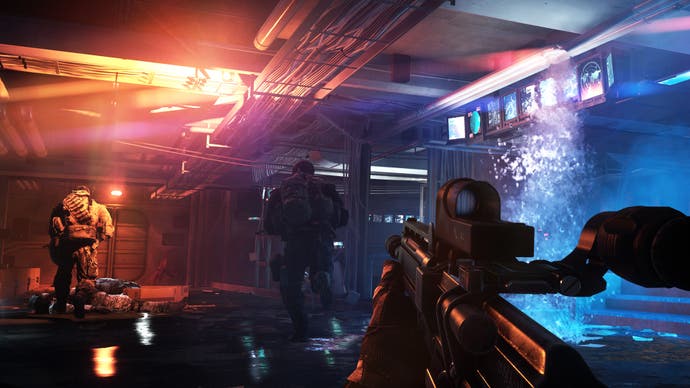
Battlefield 4 launches with some of the best maps in the series' history
Hyperbole be damned, Battlefield 4 launches with some of the best maps in the series' history. Paracel Storm showcases the more robust naval gameplay, sprawling across an archipelago of islands battered by a tropical storm that steadily builds throughout the match. Making good use of the many boats - and your swimming skill - is essential to dominating here.
Golmud Railway is another early standout, a huge hillside expanse dotted with numerous villages and clusters of buildings, and a railway line running across the centre. Rather brilliantly, one of the capture points in Conquest mode is actually on a train, defended by mounted guns, and can be moved across the map. That touch is typical of DICE's new focus on interactivity in multiplayer.
Elevators in the skyscrapers of Siege of Shanghai will take you to the roof. The mountain peak prison of Operation Locker boasts heavy barred doors that can be closed behind you, forcing pursuers to find alternate routes. Pounding machines in the factories of Zavod 311 can be activated, acting as a hazard for foot soldiers and masking the telltale sounds that might warn enemies that a tank lurks nearby.
Each of the 10 maps has its own distinct flavour, and that flavour is sometimes - though not always - enhanced by the cringingly titled "Levolution", a feature which introduces cataclysmic changes to the map when certain criteria are met. One of the best examples is the self-explanatory Flood Zone, a broad urban location that changes character completely should players break the levee, releasing a deluge that swamps the map and transforms a wide, land vehicle-based map into one where boats are suddenly essential and the verticality of the buildings is your key to staying alive. It's also a map that demonstrates just how big DICE is thinking now - one capture point is in a park, another in a petrol station across a huge elevated motorway, with more in a multi-storey car park and atop a shanty town. Traversing these stages on foot is exhausting, but is also the best way to appreciate the dozens of ways to navigate through such a thrillingly realised space.
Levolution doesn't always benefit the game though. The collapsing skyscraper that attracted so much attention during the beta is visually exciting but feels gimmicky - something you'll trigger for the hell of it, rather than to shift the gameplay in a certain direction.
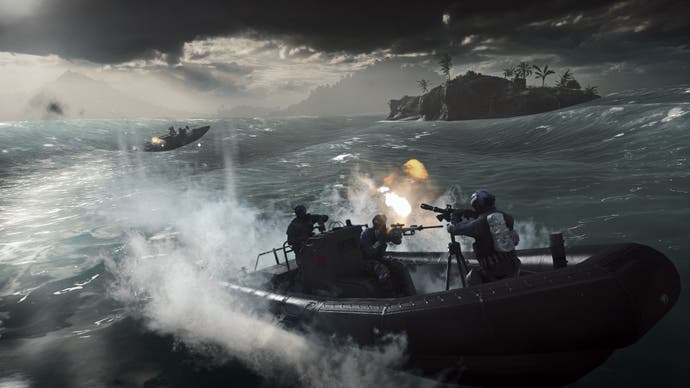
There are also a couple of new game modes, in the shape of Obliteration and Defuse. Obliteration has a bomb randomly dropped into play and each side fights for control of the device, with the aim of getting it to an enemy position and arming it. It's a fast, punchy mode, pitched somewhere between Domination and Rush. Defuse is even faster, with rounds that often last no longer than one minute. Once again you're trying to plant a bomb, but this time the small teams take turns to attack and defend. There are no vehicles and no redeployment, so matches are generally won or lost by who dies first.
Both modes are great fun, offering twists on expected play styles, but neither is truly essential. Battlefield's heart remains in the epic chaos of Conquest, so it makes sense that one of the more offbeat features of Battlefield 4 is one that is only available in the larger-scale game modes.
That feature is Commander Mode, unseen since Battlefield 2142 over six years ago. Unlike a lot of legacy features that are brought back to win over nostalgic fans, reviving Commander Mode now makes a lot of sense given the rise of second-screen gaming. Anyone can join the larger matches as a commander once they reach Level 10, and can play via their console or the downloadable tablet app which syncs effortlessly and seamlessly with the live gameplay.
From there, you get a tactical map view of the game in session and can direct your team to objectives, warn them of enemy movements, send in supplies and vehicle drops and launch cruise missile strikes against entrenched positions. You can also highlight enemies with kill streaks of six or more as High Value Targets, making them visible to all your forces, but also giving that player huge score boosts for any kills they make while being hunted.
For PC players, it will mostly be business as usual, but for console players weaned on smaller lobbies, lower frame-rates and truncated maps, it's a huge leap forwards
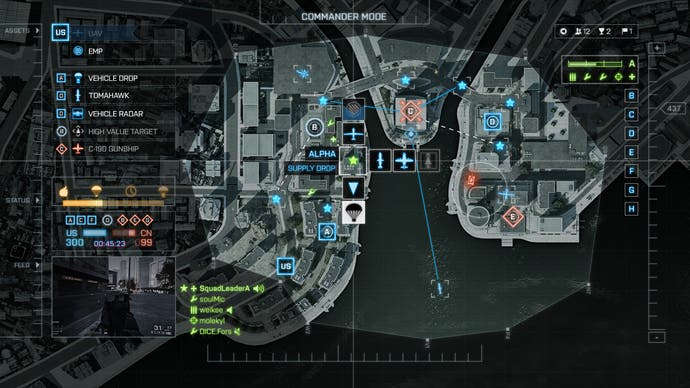
It feels very odd to start with - strangely remote and airless - but as you adjust to its unique rhythm, it becomes incredibly compelling. Commanders don't have an enormous impact on the game, but it's noticeable that the winning team is usually the one with the highest-scoring commander. Squad leaders can vote to mutiny against a useless boss, but mostly it adds a subtle yet beneficial layer of depth knowing that there's an omnipotent ally watching over you, steering you in the right direction.
It all adds up to a game that, yes, feels and plays exactly how Battlefield has always played. DICE sticks closely to what has worked in the past and its conservative approach pays dividends in terms of long-term depth at the expense of eye-catching changes. For PC players, it will mostly be business as usual, but for console players weaned on smaller lobbies, lower frame-rates and truncated maps, it's a huge leap forwards.
Or it would be if it weren't for that single-player campaign, still hanging around for no apparent reason. It's not that the story mode has lacked for attention - it features some stunning set-pieces and is undoubtedly a far more open and versatile beast than the limp Call of Duty clone that came with Battlefield 3 - but it still makes for a poor fit with the Battlefield series.
The story finds you fighting against a Russian-backed military coup in China that threatens world stability, but the details are irritatingly vague while key characters only really make sense after you've read the tie-in novel, Countdown to War. The Wire's Michael K Williams does the heavy lifting where acting is concerned, and his performance is captured with eerie precision, but there's no escaping the fact that this five-hour-ish run through the usual genre clichés, torture scene and all, exists mostly to provide sexy whizz-bang moments for the TV ads.
Some sections offer more use of vehicles and a broader corridor to advance through, but it's stiffly scripted and blighted by poor AI. You'll constantly be running far ahead of your allies, who are still stuck following their routines way behind you, or else being buffeted out of the way as they barge past. Enemies make decent attempts at flanking, but are pathetically fond of breaking cover and offering themselves up for easy headshots.

And those headshots really are easy. If anything illustrates the superfluousness of a Battlefield story mode, it's that while it introduces the locations used for multiplayer and uses the same weapons and vehicles, none of the muscle memory you build up playing solo is any use online. The feel, the pace, the skills - they're two different games sharing a common brand, and once you've hammered your way through to the underwhelming conclusion (the multiple-choice nature of which is openly spoiled by the Achievement and Trophy descriptions) there's little reason to return.
No, Battlefield is and always was a multiplayer game. It's such a key part of its DNA that it's odd to see DICE sticking with the now old-fashioned campaign-and-multiplayer split.
Patrick Bach may be right to be wary of "crazy features and crazy changes", but it's ironic that the boldest step for Battlefield 4 would have been to go multiplayer-only once again. As it is, games like Destiny and Titanfall will be pioneering the future of always-online play, where story, co-op and competitive play all overlap, while a seminal series like Battlefield is stretched thin across generations.
Consider this the last gasp of the old multiplayer model then. It's a fine swansong, especially when played on the most powerful platforms, and in particular if you treat the campaign as a free bonus feature. It's hard not to wonder just what DICE will be able to do when it no longer has to hobble its designs to suit ageing hardware, though.
